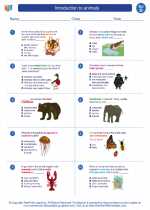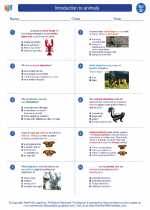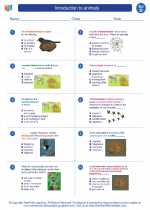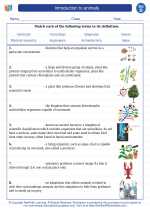Boyle's Law Equation
The mathematical equation for Boyle's Law is:
center;">\[ P \cdot V = k \]
Where:
Explanation of Boyle's Law
Boyle's Law states that, at constant temperature, the pressure of a given mass of gas is inversely proportional to its volume. In simpler terms, when the volume of a gas decreases, the pressure of the gas increases, and vice versa.
Study Guide for Boyle's Law
- Understanding the Equation: Make sure to understand the equation \( P \cdot V = k \) and how pressure and volume are related.
- Graphical Representation: Practice plotting pressure-volume graphs to visualize the inverse relationship described by Boyle's Law.
- Real-life Examples: Look for examples in everyday life where Boyle's Law is evident, such as inflating a balloon or using a syringe.
- Practical Experiments: Perform experiments to demonstrate Boyle's Law using different gases and varying pressure and volume conditions.
- Problem-Solving: Practice solving numerical problems related to Boyle's Law to reinforce understanding of the concept.
By mastering Boyle's Law, you will gain a deeper understanding of the behavior of gases and their properties. These principles are not only important in the field of science, but also have practical applications in various industries.
[Boyle's Law] Related Worksheets and Study Guides:
.◂Science Worksheets and Study Guides Fourth Grade. Introduction to animals
Study Guide Introduction to animals
Introduction to animals  Worksheet/Answer key
Worksheet/Answer key Introduction to animals
Introduction to animals  Worksheet/Answer key
Worksheet/Answer key Introduction to animals
Introduction to animals  Worksheet/Answer key
Worksheet/Answer key Introduction to animals
Introduction to animals  Vocabulary/Answer key
Vocabulary/Answer key Introduction to animals
Introduction to animals  Vocabulary/Answer key
Vocabulary/Answer key Introduction to animals
Introduction to animals  Vocabulary/Answer key
Vocabulary/Answer key Introduction to animals
Introduction to animals  Vocabulary/Answer key
Vocabulary/Answer key Introduction to animals
Introduction to animals 

 Worksheet/Answer key
Worksheet/Answer key
 Worksheet/Answer key
Worksheet/Answer key
 Worksheet/Answer key
Worksheet/Answer key
 Vocabulary/Answer key
Vocabulary/Answer key
 Vocabulary/Answer key
Vocabulary/Answer key
 Vocabulary/Answer key
Vocabulary/Answer key
 Vocabulary/Answer key
Vocabulary/Answer key

The resources above cover the following skills:
Concepts of Life Science (SC1, SC2, SC3)
The student demonstrates an understanding of how science explains changes in life forms over time, including genetics, heredity, the process of natural selection and biological evolution by showing the relationship between physical characteristics of Alaskan organisms and the environment in which they live.